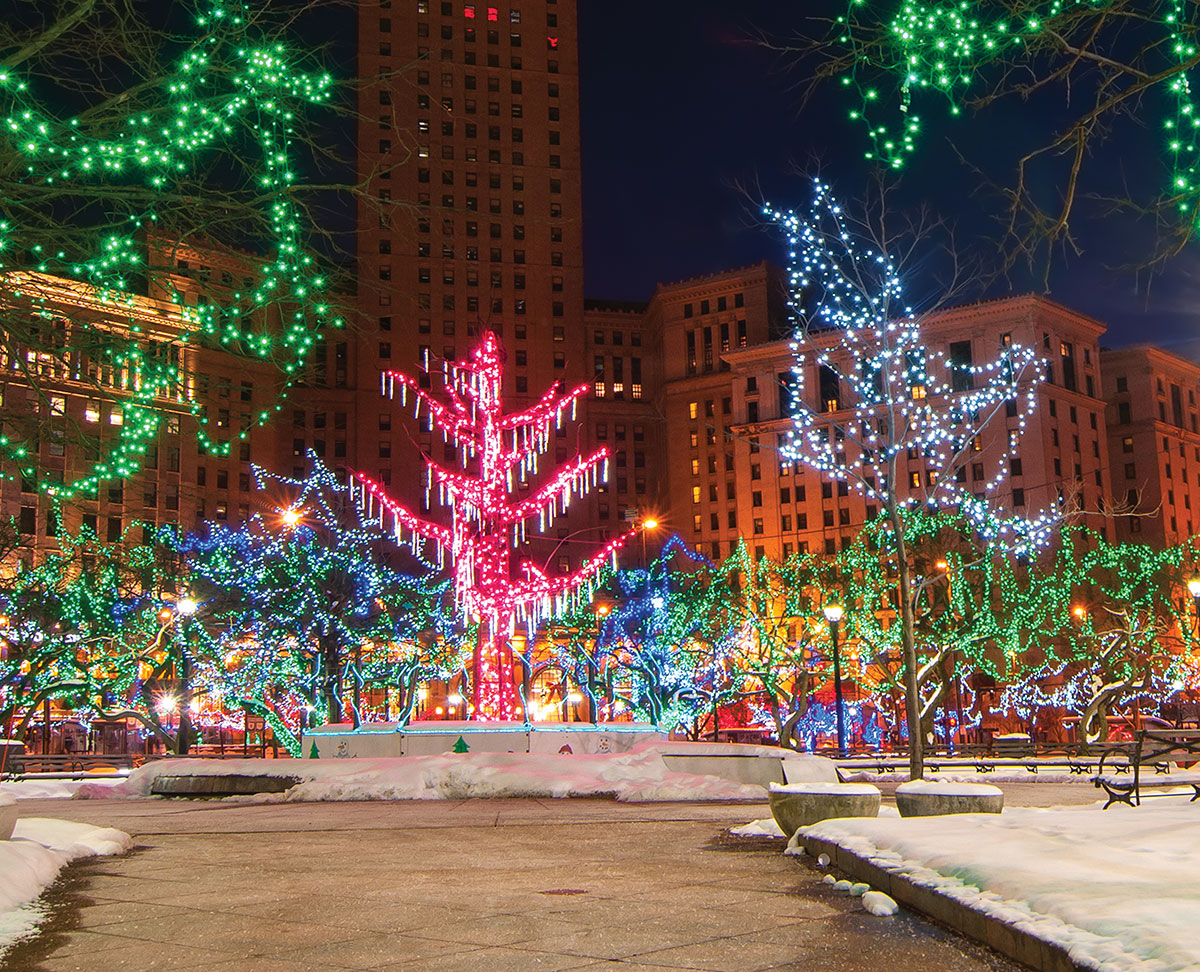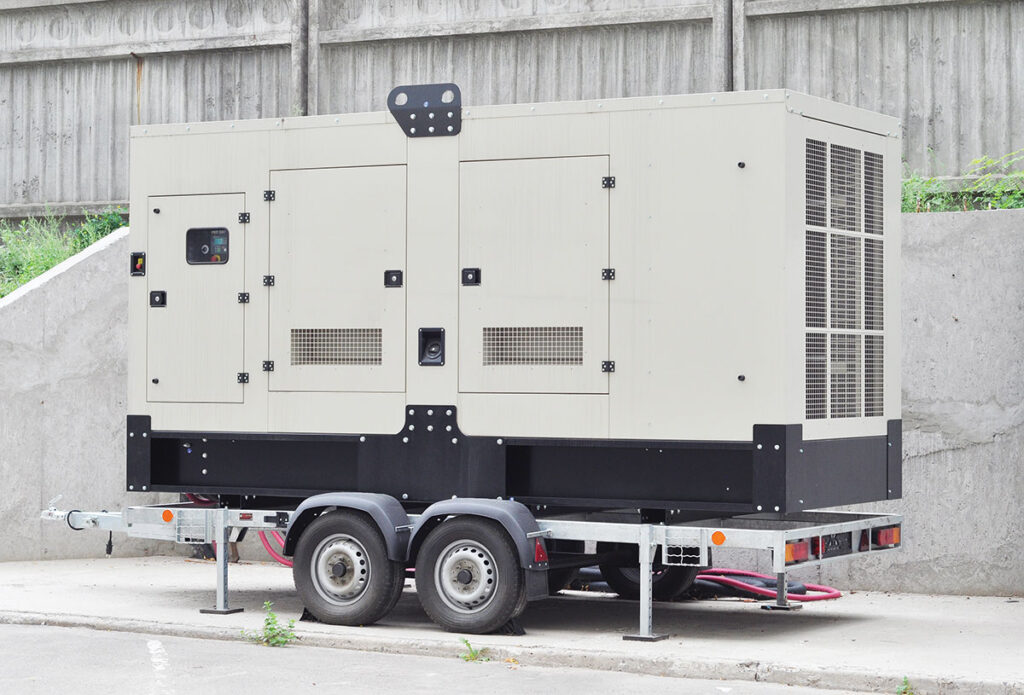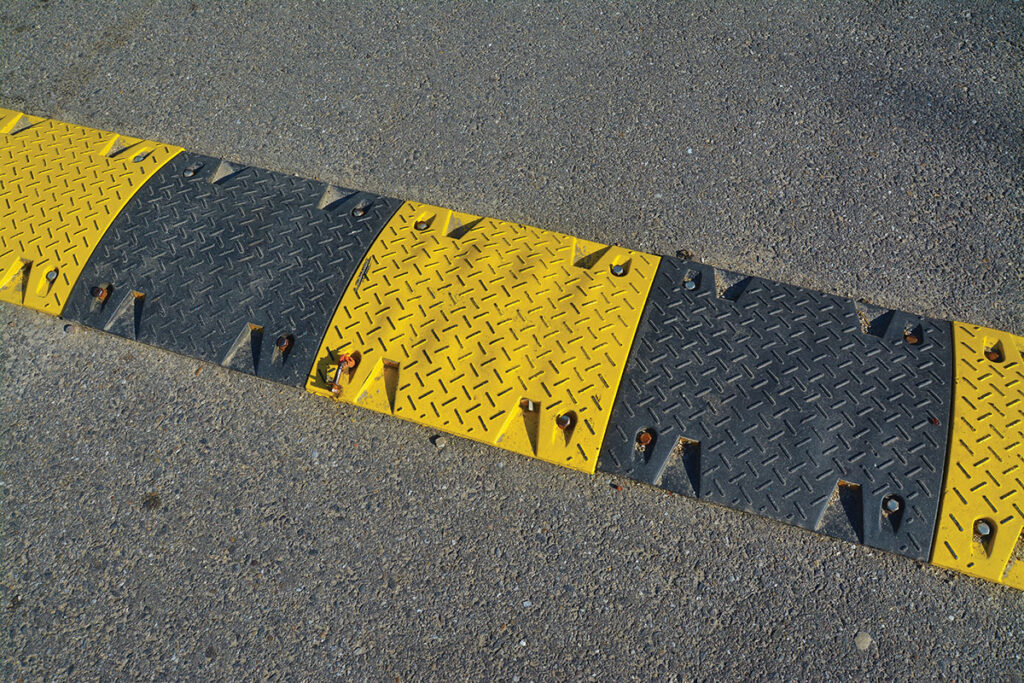The holiday season is an extremely busy part of the year for everyone, and there is no exception for electricians. While many anticipate the upcoming celebrations and décor, we start many months prior preparing for the season to come. Nobody wants to hear of an incident occurring around this time of year; it’s supposed to be happy and filled with joy. This is why it is so important for us working in the electrical industry to be cautious and maintain our vigilance towards safety. In my jurisdiction, you can bet that from October through New Year’s, there is going to be one event after another, a fast-paced environment, and people working long hours to make the magic come to life.
That is why installers and enforcement agencies focus their attention on protecting the integrity of equipment, safeguarding buildings, and, most importantly, lives. We must take every measure necessary to ensure that temporary electrical installations are installed by code and in a safe manner. That provides the intended function and protects the surrounding area at the same time. The good news is that the experts that help us practice safeguarding also give us defining standards to help us do just that. But, it’s our ultimate responsibility to know and understand these codes.
In this article, we are going to focus our attention on the 2020 National Electrical Code (NEC) Article 590, Temporary Installations. Although we will focus mostly on Article 590, as Section 590.2(A) states, “except as specifically modified by the article,” all other requirements of the NEC still apply.
Time Constraints
A unique aspect of Article 590 is the time constraints that the code defines for temporary installations. These time constraints are identified in Section 590.3(A) through (D). The NEC puts restraints on temporary installations because there is an increased level of safety concerns, an increased level of complacency. Temporary installations are permitted throughout periods of construction, remodeling, while repairing equipment, maintaining occupancies, or demolition of buildings, structures, equipment, or other applications when temporary power may be needed. The code recognizes the need for temporary power during times of emergencies like a major impairment to normal and alternate power sources, the need for testing, experiments, and developmental work. Our focus will be the installation of temporary power for holiday décor, decorative lighting and showpieces, and temporary structures like tents.
The National Electrical Code states in Section 590.3(B) that temporary electric power and lighting installations for holiday décor shall be permitted for a period not to exceed 90 days. It’s imperative that the authority having jurisdiction, the occupancy owner, and the contractor understand this requirement in order to properly plan for the install and removal at an appropriate date. The Code sets time constraints so that people do not grow complacent with the temporary means. It is important to keep in mind; this is temporary wiring, not permanent. A lot of the wiring methods in Chapter 3 for permanent wiring don’t necessarily apply to temporary installations. Although our focus is on temporary installations, Section 590.3(D) requires that all temporary wiring shall be removed immediately once it fulfills its purpose. Regardless of its purpose, as soon as the installation fulfills its purpose, it is to be removed immediately.
Source Of Power
There are various ways to supply temporary installations, including a new service, feeders, and branch circuits fed from an existing source. In order to figure out what kind of power source is needed, it is important to have a full understanding of the load that will be energized. Section 590.4(A) states the requirements for services. Services shall meet all of the applicable requirements of Article 230, Parts I through VIII. Section 590.4(B) deals with your feeders and specifies that feeders shall have overcurrent protection in accordance with Article 240. The feeder conductors may be a cable assembly or part of a multi-conductor cord or cable assembly, but shall be identified for either hard usage or extra hard usage per Table 400.4.
The Code recognizes that for temporary purposes, you can install type NM, NMC, and SE cables in dwellings, buildings, and structures without many limitations like height requirements, building type, or concealment. If you are going to be installing conductors in an underground raceway, SE cable is permitted. Branch circuits shall originate from approved power outlets, switchboards, switchgear, electrical panels, motor control centers, or a fused switch enclosure. Sometimes no existing power source is available; in this case, temporary generators are often used. Disconnecting means shall be installed for all temporary wiring methods. Disconnects and plug connectors are acceptable means of disconnecting all ungrounded conductors of each circuit. Multi-wire branch circuits are required to disconnect all of the ungrounded conductors simultaneously at the outlet or panelboard where the branch circuit originates.
Overcurrent Protection
A new section was added into the 2020 edition of the NEC that specifies the requirements for overcurrent protection that are specific to temporary installations. Always remember, flexible cables and cords shall be protected by an overcurrent device in accordance with Section 240.5(A). Section 590.8(A) recognizes that often there will be available spare overcurrent devices that an installer may use to get power, and states that the installer and inspector shall inspect the overcurrent device that will be reused. This overcurrent device shall be inspected to ensure that the device has been properly installed, maintained, and has no sign or evidence of failure or critical damage. The code even offers an informational note that states that the overcurrent device shall be inspected for evidence of arcing, overheating, deterioration, loose or broken parts, or obvious damage.
Obviously, if there are existing damages or hindered equipment, that equipment should be taken out of service to protect others who follow behind you at a later date. Keep in mind that this equipment is often used multiple times throughout the year; the wear and tear on this equipment could be severe.
Switchboards, Switchgear, And Panelboards
All of the temporary switchboards, switchgear, and panelboards shall be listed for the intended use and rated for the conditions in which they are installed. Even though the switchboard, switchgear, or panelboard may be temporary, you are still required to ensure that every circuit and circuit modification is clearly and legibly identified as to its clear, evident, and specific purpose in accordance with Section 408.4(A). It is also required that the source of power for each switchgear, switchboard, and panel is clearly identified and marked on the equipment. All electrical equipment that is likely to require examination, adjustment, servicing, or maintenance while energized shall meet the requirements of Section 110.26. All switchboards, switchgear, and panelboards shall be marked and installed in accordance with section and Table 110.28, to provide a degree of protection against environmental conditions.
All switchboards, switchgear, and panelboards should be inspected for loose parts, damage to the enclosure, any signs of arcing or heating, and any other warning signs of an impending failure each time before use. I always double-check for loose bus-bars, terminals, stripped lugs, and any enclosure opening.
Termination Of Conductors
All temporary wiring splices are required to be made within a box, conduit body, or other enclosure that protects an incident from happening and maintains safety. All flexible cables and cords that enter an enclosure are required to be secured to the enclosure or box by listed fittings designed for that purpose. There should be some stress-relief support connectors for cables that are hanging or terminated into a box or enclosure that could get pulled out. In the 2020 cycle, the NEC added additional language that ensures that lugs and terminals used for finely stranded conductors are to be identified for a specific class. Any conductor that has more strands than listed as a Class C stranded conductor in Chapter 9, Table 10, is required to be terminated in a manner that identifies the conductor class.
Finely stranded conductors easily break off strands or loosen with excessive vibration and movement, which can cause loose connections and arcing, or other serious hazardous conditions. Pay extra close attention to cables that are used time and time again. If the conductors show any kind of damage or discoloration, you should cut it off and re-strip a new end. Cords and cables should be inspected before each use, after the removal, and daily while installed. Identifying conductors in a cable assembly is a little easier than a banded multi-conductor. Each conductor in a banded multi-conductor set must be inspected individually for damage. Each conductor should be permanently marked, so the conductors do not get crossed with each other. It is permitted to have cables marked with phase tape.
Physical Protection
Often the conductors used to supply temporary loads are installed in areas accessible to unqualified people. It is critical that these conductors and cables are installed in a manner that prevents danger and accidental damage. Section 590.4(H) states that flexible cords and cables are required to be protected from sharp corners, projections, and that protection is required to be provided for conductors and cables that pass through doorways and other pinch points. Where feasible, cables and cords should be supported and secured over doorways to eliminate damage to the conductors and eliminate tripping hazards. If installed on the ground, cables and conductors should be installed away from pedestrian foot traffic, vehicular traffic, and excessive heavy loads that may be placed on the conductors. Sometimes this can be a challenge in itself, and even unavoidable.
Installers and inspectors will require the use of guards, mats, and the use of ramps to protect these cables. As stated in Section 400.17, flexible cables and cords are required to be protected from damage by bushings and fittings where passing through holes or into raceways. Cables and conductors are required to be supported at intervals that will ensure that they are protected against damage. Staples, cable ties, straps, or similar type fittings should be used to support the cables and conductors to reduce the possibility of damage. There is an exception in Section 590.4(J) that states for holiday lighting, where strain relief or tension take up relief devices are installed, or other approved means is provided to avoid damage from live vegetation, trees are permitted to be used for support of overhead spans of branch circuit conductors and cables.
Lighting And Decorations
All lighting, holiday décor, and other items for this similar purpose are required to be listed and required to be labeled on the product in accordance with Section 590.5. Inspectors and contractors alike should make sure that each product that is being supplied by temporary wiring is listed and labeled for safety and compliance. Be on the lookout for holiday decorations and lighting that was not listed and labeled by the appropriate testing agencies. All lamps used for general illumination are required to be protected from accidental contact or breakage. Suitable guards are required to be used with luminaires and lampholders for general illumination. It’s important to keep these fixtures installed in a manner that elevates the level of safety. Kids like to touch lights, especially ones that are shaped like ornaments and trees. Keep these fixtures guarded, or high up, so people are not tempted to get close and touch them. Checking the manufacturer’s recommendations, it’s important that lighting and décor that is installed over the top of crowds should be break-resistant and not made of materials that can melt and drip hot plastic and material on the top of people.
Receptacles
All receptacles used for temporary means are required to be of the grounding type. The only exception would be the receptacles that are connected to a continuous metal raceway that qualifies as an equipment grounding conductor in accordance with Section 250.118, and all of the individual branch circuits have an independent equipment grounding conductor. A good practice concerning receptacles and lighting would be to not have them share the same branch circuits. The last thing that you want to happen is an overloaded receptacle tripping out along with the lights and causes tripping and falling hazards. Any 15- and 20-ampere, 125- and 250-volt receptacles located in damp or wet locations is required to have ground-fault circuit interrupter (GFCI) protection per Section 406.9(B)(1).
The receptacles located in wet locations are required to have an enclosure that is weatherproof regardless of if a plug is connected to the receptacle or not. In addition to having GFCI protection, all receptacles located outdoors are required to be rated as weather-resistant receptacles in accordance with section 406.4(D)(6). Any receptacle(s) being controlled for the purpose of energy management or building automation for lighting purposes should be marked in accordance with Section 406.3(E).
GFCI personnel protection is required for receptacles that are not a part of permeant wiring and for existing receptacle outlets. It is permitted to use listed cord sets or devices that incorporate GFCI protection of personnel. All 125 volt and 125/250-volt receptacles used on portable generators that are 15 kW or smaller are required to be provided with GFCI protection for personnel. As always, inspectors and contractors alike should pay attention to the location and placement of receptacles used for holiday décor, and temporary power. If feasible, put them under covered areas, even if rated for weather resistance. Make sure they are away from the public; you don’t want people trying to plug in their electronic devices. Ensure they are in a spot that doesn’t easily collect water or flood during times of heavy rain. Keep them and the related wiring away from physical damage of any kind.
Grounding And Bonding
One of the most important aspects of temporary wiring is having a properly grounded and bonded system. Specifically for temporary installations, Section 590.6(B)(2) requires an assured equipment grounding conductor program if conditions in 590.6(B)(1) are not met. This program is a written program that is continuously enforced at the site by one or more designated people that ensure that the effective ground-fault current path is maintained at all times to protect lives and property while in use. The assured equipment grounding conductor program requires the following:
(a) The following tests shall be performed on all cord sets, receptacles that are not part of the permanent wiring of the building or structure, and cord-and-plug-connected equipment required to be connected to an equipment grounding conductor:
(1) All equipment grounding conductors shall be tested for continuity and shall be electrically continuous.
(2) Each receptacle and attachment plug shall be tested for correct attachment of the equipment grounding conductor. The equipment grounding conductor shall be connected to its proper terminal.
(3) All required tests shall be performed as follows:
a. Before first use on site
b. When there is evidence of damage
c. Before equipment is returned to service following any repairs
d. At intervals not exceeding 3 months
(b) The tests required in 590.6(B)(2)(a) shall be recorded and made available to the authority having jurisdiction.
Remember, the equipment grounding conductor is what provides a fault current path back to the grounded conductor, which ultimately facilitates the tripping of your overcurrent device. If you have one that is disconnected and a ground fault happens, you will normally energize non-current carrying metal, which can lead to fires or even electrocution.
Another main focus of concern lies with the grounding electrode connections of separately derived systems in accordance with Sections 250.30(A) through (C). Sometimes locating or installing a grounding electrode can be challenging, especially in the middle of a parking lot. Sometimes contractors will drill a hole through the asphalt and drive ground rods; this is an acceptable practice if needed, but make sure you get a utility locate prior to doing so. Many utility providers install underground conductors and piping systems beneath locations such as parking lots. Utilize call before you dig services offered by many states and utility providers.
With transformers located indoors and being fed from the building’s supply source, it is a possibility to use existing grounding electrodes. Just remember, it is imperative to keep the grounding electrode conductor as short as possible. Grounding electrodes are not required for portable generators as long as the generator only supplies equipment located on the generator, or through the cord and plug devices and if the equipment grounding conductor is attached to all of the non-current carrying parts of the frame. For vehicular mounted generators, the grounding electrode is not necessary as long as the frame is bonded, the generator only supplies equipment located on the generator, it is supplied through cord-and-plug connected equipment through the receptacles mounted on the vehicle, and if the frame is connected to the non-current carrying metals on the frame.
Summary
The holiday season is a busy season, but one that we all should be able to enjoy without taking unnecessary risks. When inspecting and installing temporary wiring, it is easy to grow complacent. Don’t! It’s so important that every installer, inspector, and owner pay close attention to the requirements, understand the associated risks, and stay vigilant throughout the period of the temporary installation. Set procedures of daily follow up inspections on all of the wiring and equipment. Create checklists that ensure that everyone is doing everything necessary to maintain public safety. Often it’s requested that you work many hours to accommodate installations and requests, don’t let that be an excuse for a non-compliant, unsafe installation. It is our duty to ensure that we practice the safeguarding of property, equipment, and lives.
Happy Holidays to you, your friends, and your family!















Find Us on Socials